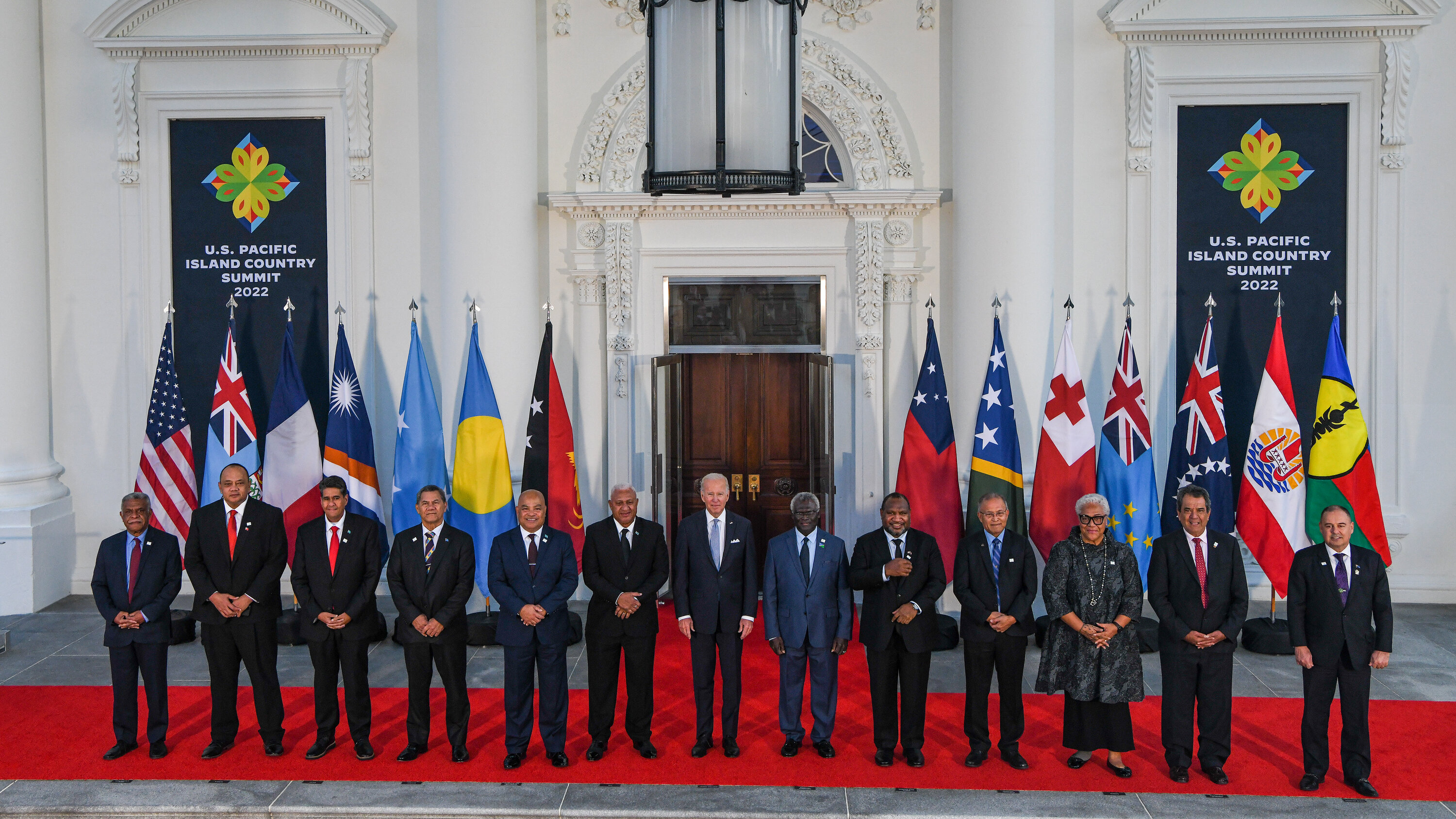Countering China's Naval Growth: The Role Of U.S. Missile Systems

Table of Contents
The Expanding Chinese Navy: A Growing Threat
China's Naval Modernization
China's naval modernization is a multifaceted undertaking, encompassing significant advancements in several key areas. The People's Liberation Army Navy (PLAN) boasts a rapidly expanding fleet, including multiple aircraft carriers, a growing number of nuclear-powered submarines, and an arsenal of increasingly sophisticated weaponry. The PLAN's fleet size has more than doubled in the last two decades, and its technological capabilities are rapidly approaching those of the U.S. Navy. This rapid expansion represents a considerable shift in the global balance of naval power.
- Aircraft Carriers: China now operates multiple aircraft carriers, significantly enhancing its power projection capabilities far beyond its coastal waters.
- Submarines: The PLAN possesses a substantial fleet of both conventional and nuclear-powered submarines, capable of both anti-surface and anti-submarine warfare. These submarines pose a significant threat to U.S. naval operations in the region.
- Advanced Weaponry: China is investing heavily in advanced weaponry, including hypersonic missiles and advanced anti-ship ballistic missiles, presenting a formidable challenge to U.S. naval dominance.
The Geopolitical Implications
The implications of China's expanding naval power are far-reaching. Its assertive actions in the South China Sea, including the construction of artificial islands and disregard for international maritime law, have created significant tensions with neighboring countries. This has raised concerns about freedom of navigation, access to vital trade routes, and the potential for escalated conflict.
- Freedom of Navigation: China's claims in the South China Sea directly challenge the principle of freedom of navigation, a cornerstone of international law and crucial for global trade.
- Territorial Disputes: China's increasingly aggressive posturing in disputed territories raises the risk of miscalculation and accidental escalation, potentially leading to regional conflict.
- Regional Alliances: China's naval growth is forcing a recalibration of regional alliances, pushing countries to strengthen their defense partnerships to counter China's influence.
U.S. Missile Systems as a Deterrent
Land-Based Missile Systems
Land-based missile defense systems play a crucial role in deterring potential Chinese aggression. Systems like Aegis Ashore, equipped with advanced interceptor missiles, provide a layered defense against ballistic and cruise missile attacks. While these systems offer significant defensive capabilities, their fixed locations make them vulnerable to preemptive strikes.
- Range and Accuracy: Land-based systems offer long-range detection and interception capabilities, providing a critical layer of defense against incoming missiles.
- Limitations: The fixed nature of land-based systems makes them vulnerable to saturation attacks and necessitates robust protection measures.
Sea-Based Missile Systems
Sea-based missile systems, deployed on destroyers and cruisers such as the Arleigh Burke-class, offer a highly mobile and responsive defense against Chinese naval assets. Their ability to operate independently or as part of larger carrier strike groups allows for flexible deployment and power projection.
- Mobility and Responsiveness: The mobility of sea-based systems allows for rapid response to evolving threats and adaptation to changing geopolitical situations.
- Integrated Defense: Sea-based missile systems are crucial components of integrated naval task forces, providing layered defense and offensive capabilities.
Air-Based Missile Systems
Air-launched missiles, deployed from long-range bombers and fighter jets, offer a crucial element of offensive and defensive capability. These systems can strike targets at significant distances, impacting enemy ships and disrupting their operations.
- Long-Range Strike: Air-launched missiles offer the ability to strike targets far beyond the range of land-based or sea-based systems.
- Flexibility: Air-based platforms offer greater flexibility in terms of deployment and targeting options, adapting to evolving threats.
Strategic Implications and Future Developments
The Importance of Alliances
Strong alliances with regional partners are essential in countering China's naval growth. Joint military exercises, intelligence sharing, and coordinated defense strategies are crucial for deterring aggression and maintaining regional stability. Alliances like the Quad (U.S., India, Japan, Australia) play a pivotal role in this endeavor.
- Joint Military Exercises: Regular joint military exercises enhance interoperability and build trust among allies.
- Intelligence Sharing: Effective intelligence sharing allows for early detection of potential threats and coordinated responses.
Technological Advancements
Continued innovation in missile technology is crucial to maintaining a technological edge. Research and development in areas like hypersonic weapons and directed energy systems are essential for countering future threats.
- Hypersonic Weapons: The development and deployment of hypersonic weapons are critical to maintaining a technological advantage over potential adversaries.
- Directed Energy Weapons: These cutting-edge technologies offer the potential to revolutionize naval warfare.
Budgetary Considerations
Maintaining and upgrading U.S. missile defense systems requires significant budgetary investment. Adequate funding is crucial to ensure the continued effectiveness and readiness of these critical systems in the face of growing threats. Prioritizing investments in research, development, and procurement is paramount.
Countering China's Naval Growth Through Effective Missile Defense
In conclusion, the rapid expansion of China's naval power presents a significant challenge to U.S. interests and global security. A robust and adaptable missile defense strategy, encompassing land-based, sea-based, and air-based systems, is crucial for deterring Chinese aggression and maintaining regional stability. Strong alliances, continued technological advancements, and adequate budgetary support are vital for ensuring the continued effectiveness of U.S. missile defense capabilities in countering China's naval growth and maintaining a balance of power in the Indo-Pacific and beyond. Further research and discussion on innovative missile defense strategies are essential for meeting the evolving challenges posed by China's naval power. We must continue to invest in and refine our missile defense strategies to effectively counter Chinese aggression and safeguard global security.

Featured Posts
-
 40 Yasina Ragmen Ronaldo Nun Durdurulamaz Performansi
May 28, 2025
40 Yasina Ragmen Ronaldo Nun Durdurulamaz Performansi
May 28, 2025 -
 2 Yillik Soezlesme Cristiano Ronaldo Al Nassr Da
May 28, 2025
2 Yillik Soezlesme Cristiano Ronaldo Al Nassr Da
May 28, 2025 -
 Game 4 Ejection Mathurin And Hunters Altercation In Pacers Cavaliers Series
May 28, 2025
Game 4 Ejection Mathurin And Hunters Altercation In Pacers Cavaliers Series
May 28, 2025 -
 Pacers Vs Hawks Injury Report Game Day Update March 8th
May 28, 2025
Pacers Vs Hawks Injury Report Game Day Update March 8th
May 28, 2025 -
 Moncadas Home Run Powers Angels To Fifth Consecutive Win
May 28, 2025
Moncadas Home Run Powers Angels To Fifth Consecutive Win
May 28, 2025
